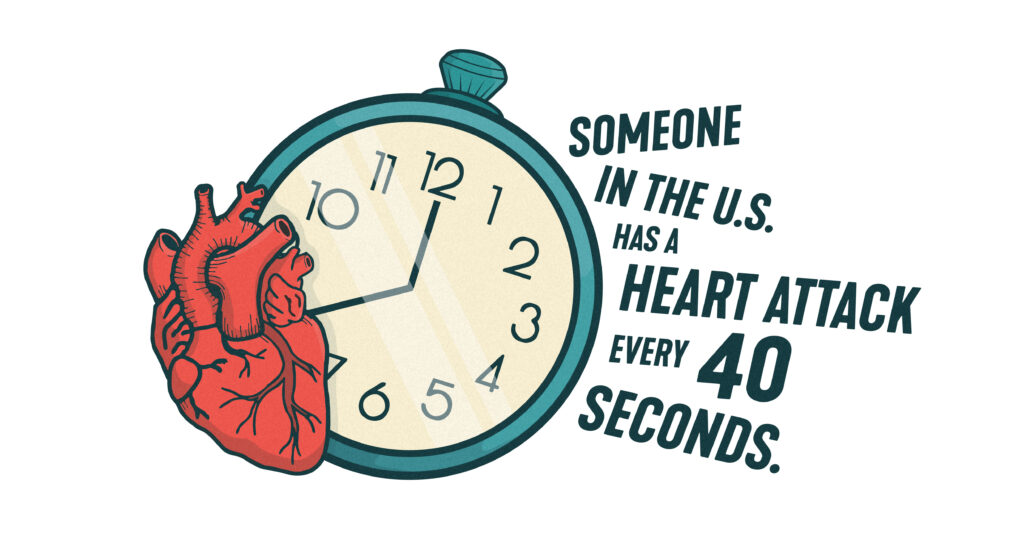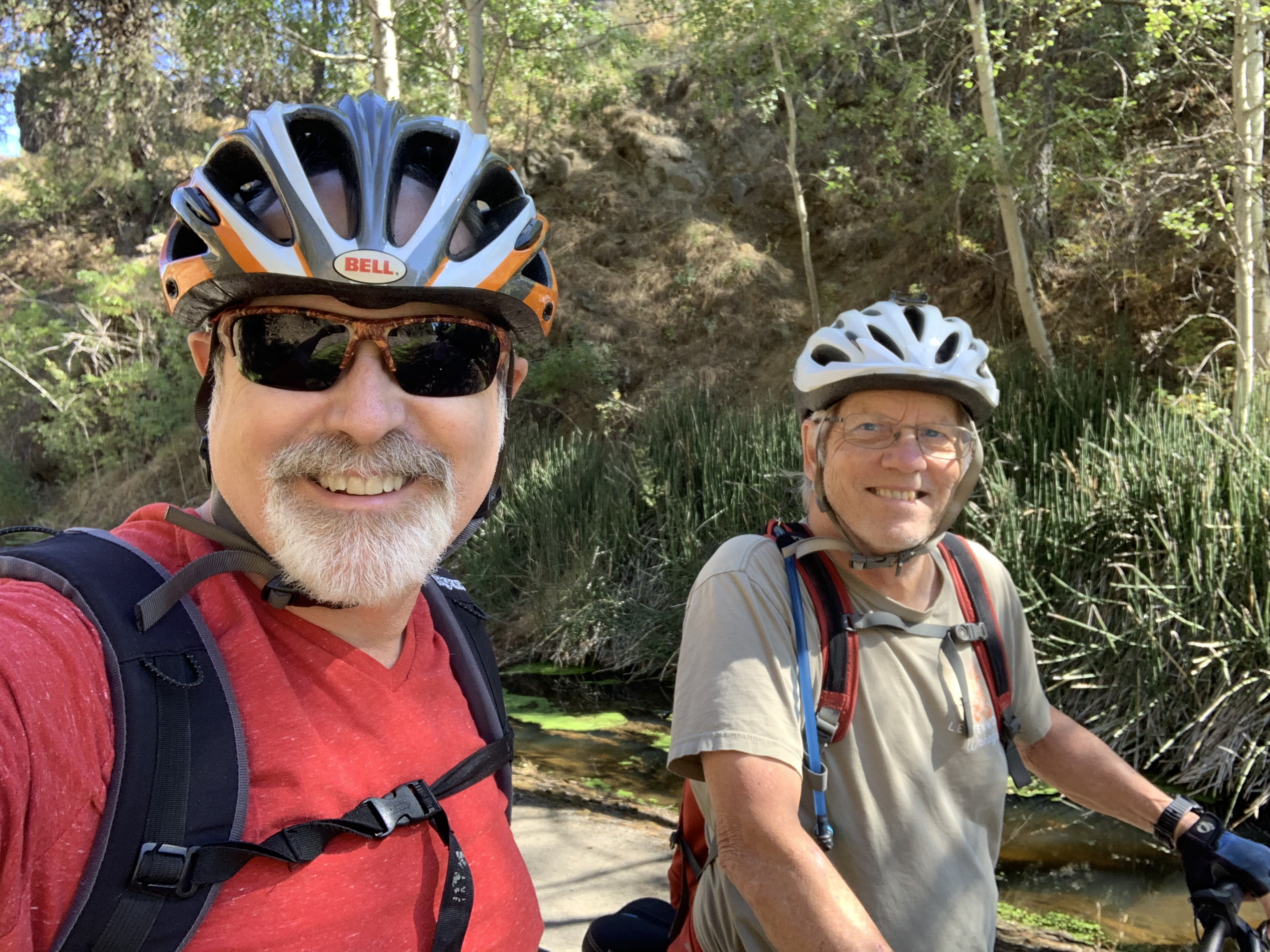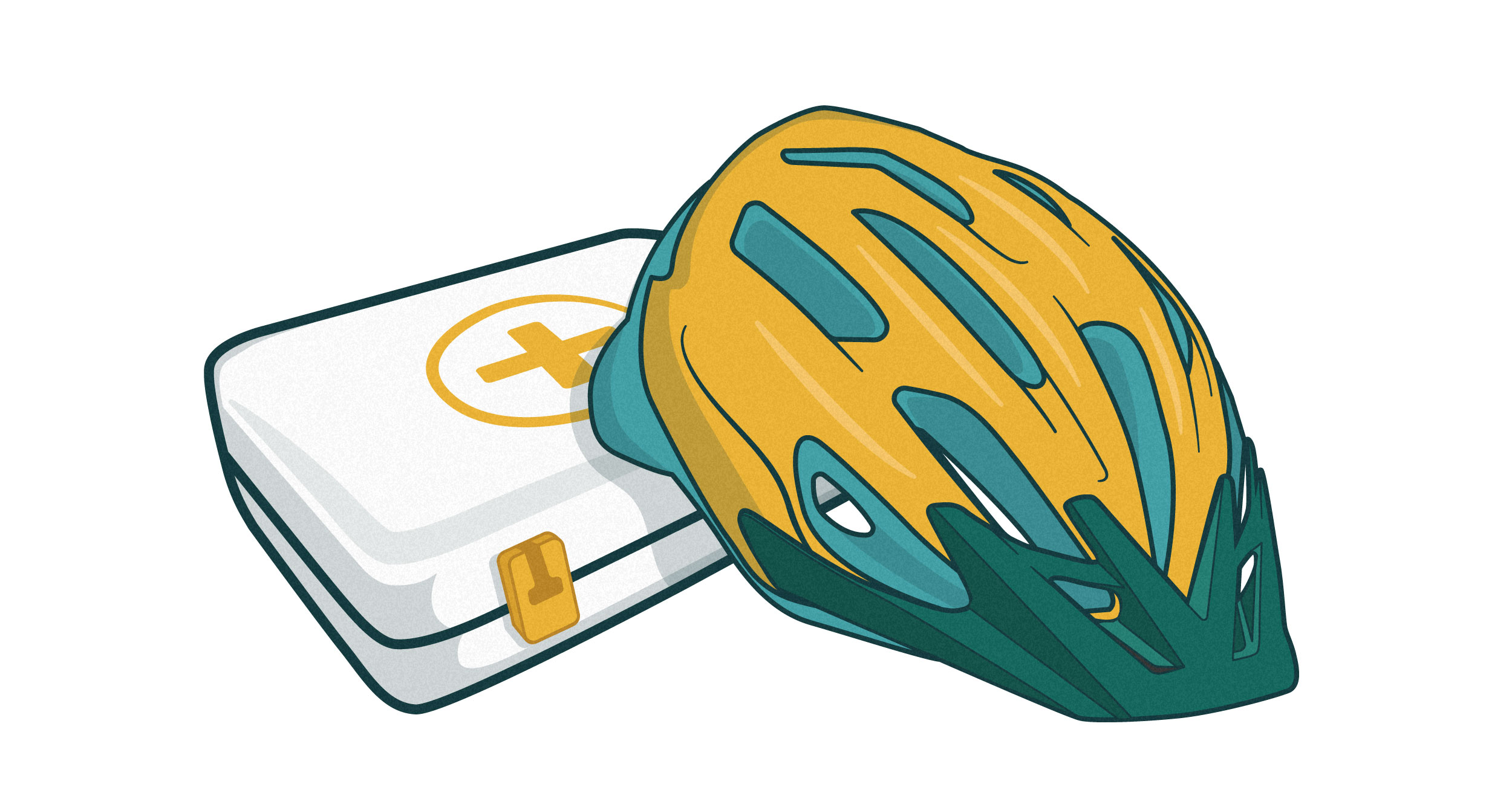3.2.23 | read time: 5 min
From The Mountain to The Cardiac Intensive Unit
Rick Hosmer
The human heart is an incredible muscle – moving oxygen and nutrients through the bloodstream. Over the past 61 years, my heart has beat over 2.3 billion times, enabling me to hike 43 miles in a day, ride my bike across the country, climb Mt. Rainier, and fall in love several times — along with a couple of subsequent heartbreaks.
On August 21, 2022, my heart was pounding hard, adding to those 2.3 billion beats as it powered me and my bicycle up the trails at Mt. Spokane State Park toward Quartz Mountain.
My friend and I cranked up a series of steep hills, which was challenging. I had to push my bike up the second hill, which is not necessarily an uncommon occurrence. I jokingly told him as I struggled to the crest, “The thing about exercise is if you don’t keep it up regularly, it’ll kill you.” At the time, I didn’t know how right I was.
We hit our third hill at over 4,000 feet of elevation, and I said, “I think I need to walk this one. I’m just not feeling 100% today.” We both pushed our bikes up to where the trail leveled off. At the top, I said, “I need to take a break – actually, I need to sit down.” A few minutes later, “No, I need to lie down.” As I lay there in a cold sweat, I knew something was wrong.
After 20 minutes with no relief, I finally told my friend, “I think you need to get me some help.”
As he took off down the mountain on his bike, I texted my wife, letting her know that something weird was happening but not to worry. She immediately called me and asked if she should call an ambulance. I’m the kind of guy who would set his own broken leg, so when I said, “You’d better call an ambulance,” she knew it was serious.
As luck would have it, my friend found a couple of women working on a trail maintenance project. They came up the dirt road to rescue me and drove me to the parking lot.
When the ambulance arrived, the EMTs did a quick assessment and told me I was having a “cardiac event.” There wasn’t enough time to drive to the hospital. I needed a LifeFlight.
The helicopter landed in a cloud of dust, and I was loaded into the patient area. Before I knew it, I was on the rooftop of Sacred Heart Medical Center in Spokane.
I was rushed to the cardiac catheterization lab, where surgeons identified a blood clot completely blocking the left anterior descending artery in the center of my heart. After removing the clot and installing a stent (a wire mesh tube that helps keep the artery open), I was off to the Cardiac ICU (CICU). After four days in the CICU under the skilled and compassionate care of incredible doctors, nurses, and staff, I was transferred to the cardiac floor.
RECOVERY
When I was finally allowed to get out of bed, my nurses encouraged me to move around as much as I felt comfortable. I did endless laps around the hospital, totaling two miles on my first day.
My lead physician talked with me just before release, explaining how I had had a major “widow-maker” heart attack. Widow-maker heart attacks have a 90% fatality rate — even higher when the person is over two hours away from treatment like I was.
The events that saved my life were that I listened to my body, my friend acted quickly to find help, the trail workers got me off the mountain, the LifeFlight, and my level of fitness and strength. All of these factors added up to being able to tell you this story instead of someone else telling it for me.
My recovery was steady. My doctors were pleased with my pulse, EKG, and oxygen saturation numbers. I was released six days after my nearly fatal ride to Quartz Mountain.

LESSONS LEARNED
I’ve always been active and healthy, with low blood pressure and cholesterol. A heart attack was the last thing I thought would happen to me.
But I learned I am not alone. Heart disease is the leading cause of death in the U.S. Each year, over 800,000 people in the U.S. have a heart attack. That’s one every 40 seconds.
I am six months into recovery. The first month I was at home, with the incredible 116 & West teams in Spokane and Boise covering for me. After that, I returned to the office and did cardiac rehab exercises three times a week. In December, I started working out on my own and spent an hour 3-4 times a week on a treadmill and stationary bike.
On the weekends, I’m back on my mountain bike or hiking trails around Spokane. I take medication each morning and evening to lower my blood pressure, heart rate, and other aspects to help my heart rest and heal. Other than that, you’d never know I had a heart attack.
Recently I shared my story on a local news broadcast to remind others that their heart — this powerful muscle that pumps nearly 38 million times a year — is incredibly fragile. Unfortunately, heart disease is rampant in the U.S.; high blood pressure, high cholesterol, obesity, smoking, excessive alcohol use, and stress are major contributors.
I’m determined to be as active and healthy as I can and hopefully serve as an inspiration to anyone who experiences a heart attack or other cardiac event. Don’t let a heart failure or heart disease diagnosis define you.
Live life to its fullest – whatever that means for you. The human body has an incredible ability to heal itself. I am traveling down that path of healing so I can get back to Quartz Mountain. I’ve got a ride to finish.

—————-
Rick Hosmer is a Principal and Account Planner at 116 & West. He can be reached at rick@116andwest.com.

